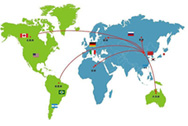- Expanded Polystyrene
- Flame Retardant EPS
- Fire Resistant EPS
- FMS EPS
- FSA EPS
- EPP Black
- EPP Gray
- EPP White
- Expanded Polypropylene AG17
- Expanded Polypropylene CH17
- Expanded Polypropylene CS17
- Expanded Polypropylene DB17
- Expanded Polypropylene GR17
- Expanded Polypropylene ML17
- Expanded Polypropylene NF17
- Expanded Polypropylene PB17
- Expanded Polypropylene PR15
- Expanded Polypropylene RD17
- Expanded Polypropylene TL17
- Expanded Polypropylene YL17
- Expanded Polypropylene ZS15
- 4,4'-Oxydianiline

Q&A of EPS
Expanded Polystyrene Foam
Expanded polystyrene foam is a plastic material that has special properties due to its structure. Composed of individual cells of low density polystyrene, EPF is extraordinarily light and can support many times its own weight in water. Because its cells are not interconnected, heat cannot travel through EPF easily, so it is a great insulator. EPF is used in flotation devices, insulation, egg cartons, flats for meat and produce, sandwich and hamburger boxes, coffee cups, plates, peanut packaging, and picnic coolers. Although it is generally called Styrofoam, Styrofoam is a trademark of Dow Chemical Company and refers specifically to a type of hard, blue EPF used mainly in boating.
During the late 1800s, researchers seeking materials suitable for making film, carriage windshields, and various small items such as combs produced early plastics out of natural substances and chemicals. In making these plastics, the scientists exploited the natural tendency towards polymerization, in which two or more small molecules, or monomers, combine to form chains that are often very long. The resulting molecular chains, or polymers, comprise repeating structural units from the original molecules. One of the most familiar natural polymers is cellulose, the string of glucose molecules that forms a primary component of plant cell walls, cotton, paper, and rayon. Polystyrene is among the best-known synthetic polymers . Styrene, the liquid hydrocarbon from which EPF is made, was derived in the late nineteenth century from storax balsam, which comes from a tree in Asia Minor called the Oriental sweet gum. In the early nineteenth century, completely synthetic plastics were developed from hydrocarbons, whose structure is conducive to easy polymerization. Polystyrene, the polymer from which EPF is made, was invented in 1938.

